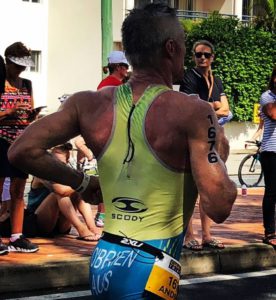
Exercises to Improve Running Form

Why Are Exercises to Improve Running Form Important?
Every runner that is serious about running faster, more efficiently and injury free should have some set run specific exercises in their weekly training schedule. The benefits of performing exercises that improve running form is that they target muscles that may be underdeveloped or weak. This is imperative to becoming a well rounded runner. Not to mention hugely decreasing the chance of any niggling injuries arising due to these weaker areas.
When a runner has an area of weakness when running, the body will recruit other surrounding muscles, tendons, ligaments etc to do extra work to help the body to move along when running. This can result in overloading these areas because they are stressed more than they are sometimes designed for. Overloading can result in tightness, tears, strains,inflammation etc.
Below are 5 exercises that I perform regularly to strengthen important areas around the buttock and legs to help me run faster, more efficiently and hopefully injury free. Note I am not a physical therapist or exercise physiologist, these videos are purely me demonstrating how I perform these exercises.
The Bulgarian Split Squat
Targeted Areas:
Glutes (maximus, medius, minimus)
Quadriceps
Adductors
How To Perform
Get into a forward lunge position with torso upright, core braced and hips square to your body, with your back foot elevated on the bench. Your leading leg should be approximately a meter in front of the bench (depending on your height). Lower until your front thigh is almost horizontal, keeping your knee in line with your foot. Your front knee should not protrude past the front of the foot . If it does, place the front foot out further from the bench.
Hip Thrusts
Targeted Areas:
Teaches optimal hip extension
Glutes
Hamstrings
The hip thrust is a glute exercise designed to improve your strength, speed, and power by teaching optimal hip extension. The glutes are designed to extend the hip or pull the leg behind the body. If your glutes are underdeveloped your speed, power and strength are compromised.
How To Perform
Lay down with your back against the floor and your knees bent, feet planted firmly on the floor. Brace your core and press your heels into the floor, driving your hips upward. Pause momentarily at the top, making sure to squeeze the glutes. Then return back to starting position in a controlled motion.
Donkey Kicks
Targeted Areas:
Glutes
Hamstrings
Hips
Core
How To Perform
Get on all fours on the floor with your shoulders and knees lower than your hips. Working one leg at a time, lift leg back and up as high as you can until leg is straight and foot is flexed, squeezing the buttock at the top of the movement. Return knee back to start keeping it just of the floor.
Side Lying Leg Lift
Targeted Areas:
Glute medius
The role of the glute medius while running is to dynamically stabilize the pelvis in a neutral position during the weight bearing phase of each stride.
When this important muscle is underdeveloped it cannot work to its potential resulting in the hip to drop which therefore slows your running pace and also puts unwanted stress on other areas.
How To Perform
This muscle can be hard to activate if underdeveloped . As surrounding muscles will help out this weaker muscle, and hindering it from getting to its strength potential.
The best way I find to target is to lay on your side, with your bottom thigh 90 degrees to your torso, with knee bent at 90 degrees also. Tilt your top hip slightly forward. With your top leg straight at the knee and foot flexed, raise your leg up to 45 degrees . Then perform small circles to activate and feel the muscle. When the muscle is activated lower down, just keeping it from touching your bottom leg to then raise back up again to 45 degrees, then down again. Perform as many as you can, then switch legs.
Box Jumps
Although I’m not currently including them in my own work-outs, I’ve included Box Jumps as I think they are a great exercise for developing power and activating your fast twitch muscles. This is great for running up hills, speed development and overall improvement for running economy.
I’m not currently up to doing these myself due to my back not feeling ready for it after injury earlier this year. I hope I can add it in down the line as I continue to build strength in the surrounding supportive muscles.
Targeted Areas:
Glutes
Quads
Hamstrings
Calves
Core
Arms
How To Perform
Find yourself a box, bench or stable platform. Start with a height of about 30- 50cm or whatever you are comfortable with, remembering to start small to perform the exercise correctly, then increase height later.
Stand in front of the box with your feet shoulder width apart. Bend into a quarter squat then swing your arms back, then swing them forward and explode up off the ground. Landing on the box as softly as possible. You are aiming to mimic your take off position on the landing of you feet flat and knees slightly bent. If you land in a deep squat rather than a quarter squat it’s a sign that you are using a box that is too high for you, and best to downsize. Then jump back down landing as softly as possible. You can also opt to step down one leg at a time.
If you’d like to watch a video on this being performed, click here.
Regularly work these exercises to improve running form into your weekly program to see positive results to your running. You can break these exercises into two groups and alternate between weeks. Even performing them once a week is beneficial although multiple times would be optimal.
If you have a certain exercise you love to add in that helps make you a better runner I’d love to hear about it, please leave me a comment below.
Happy Running,
Andrew.